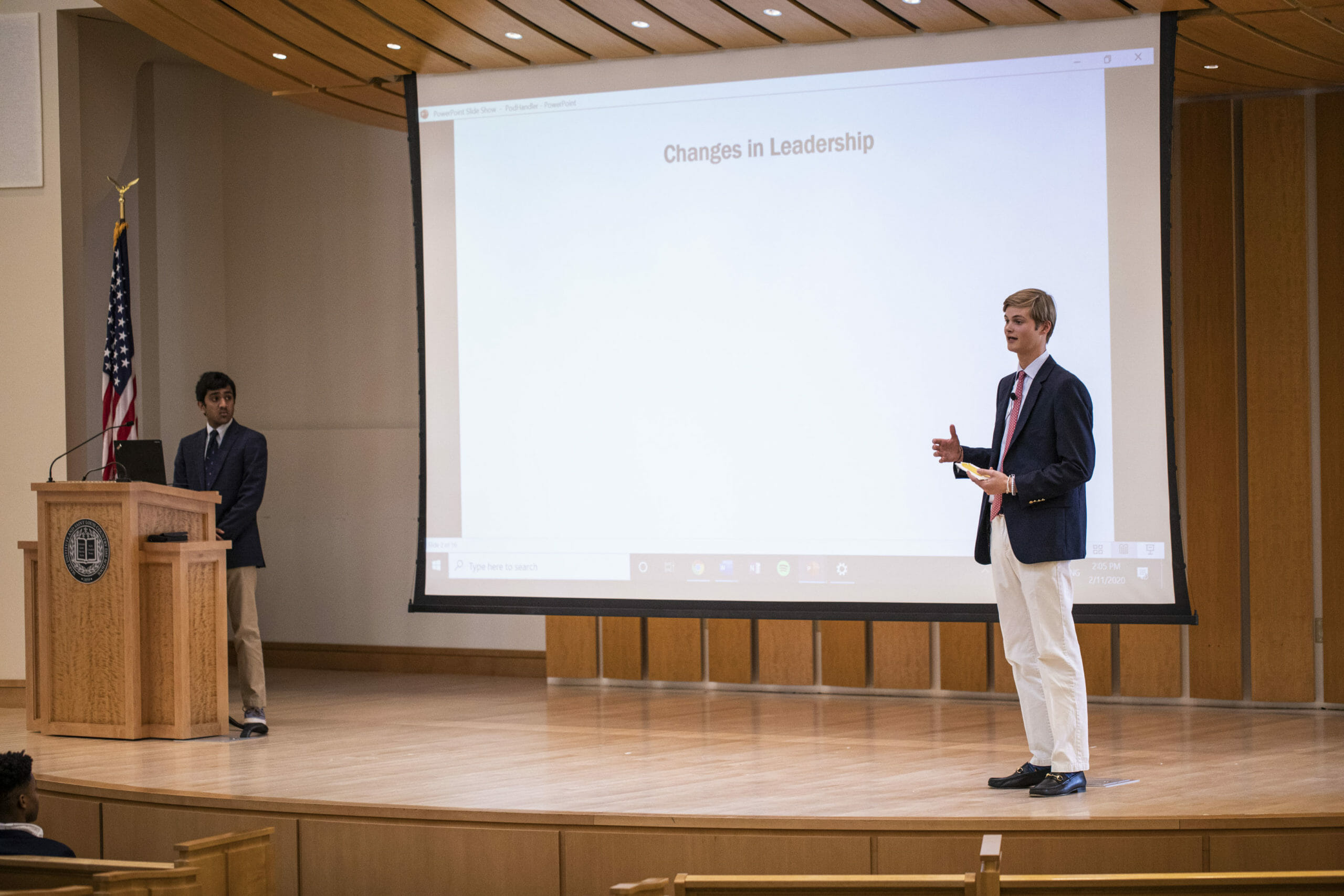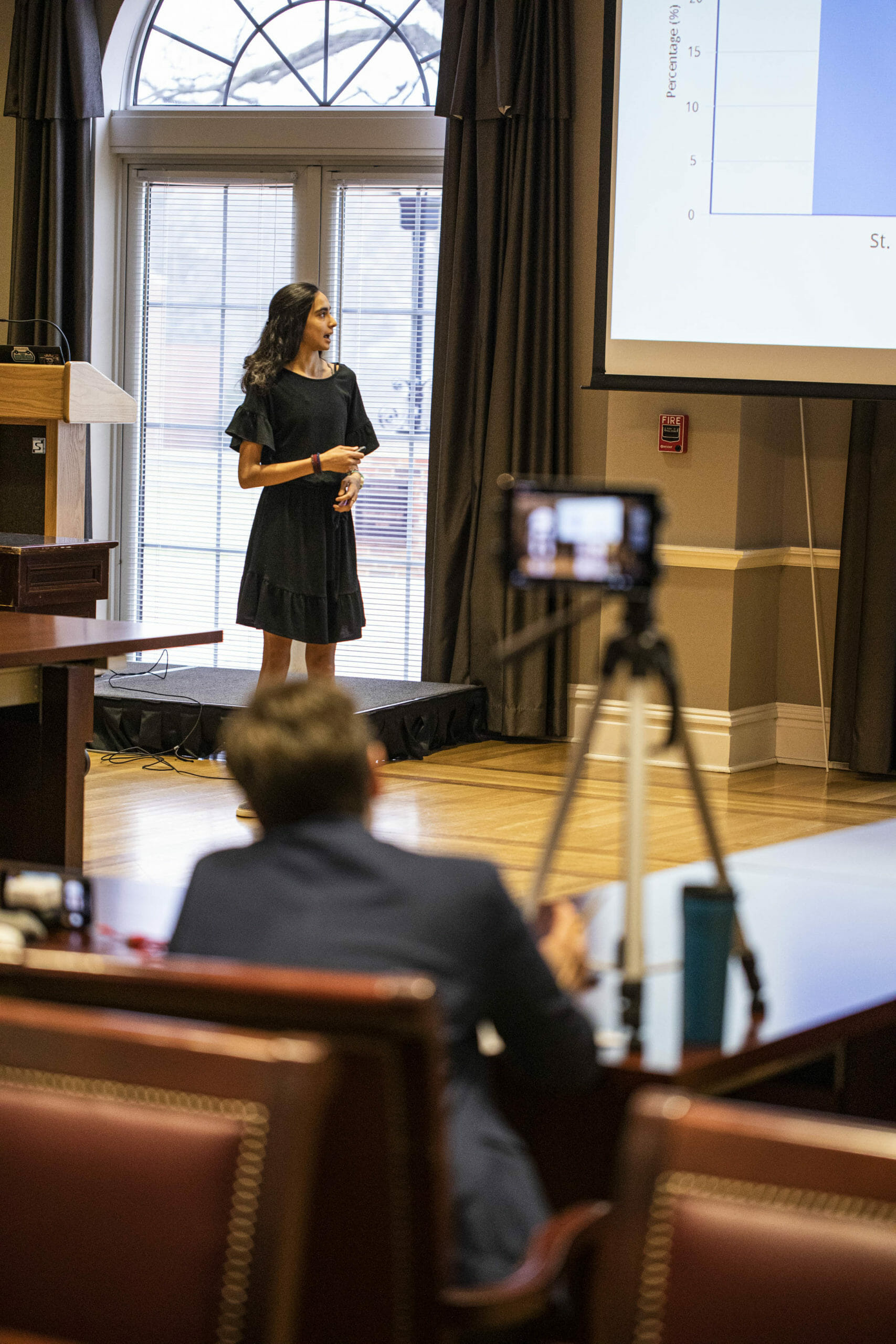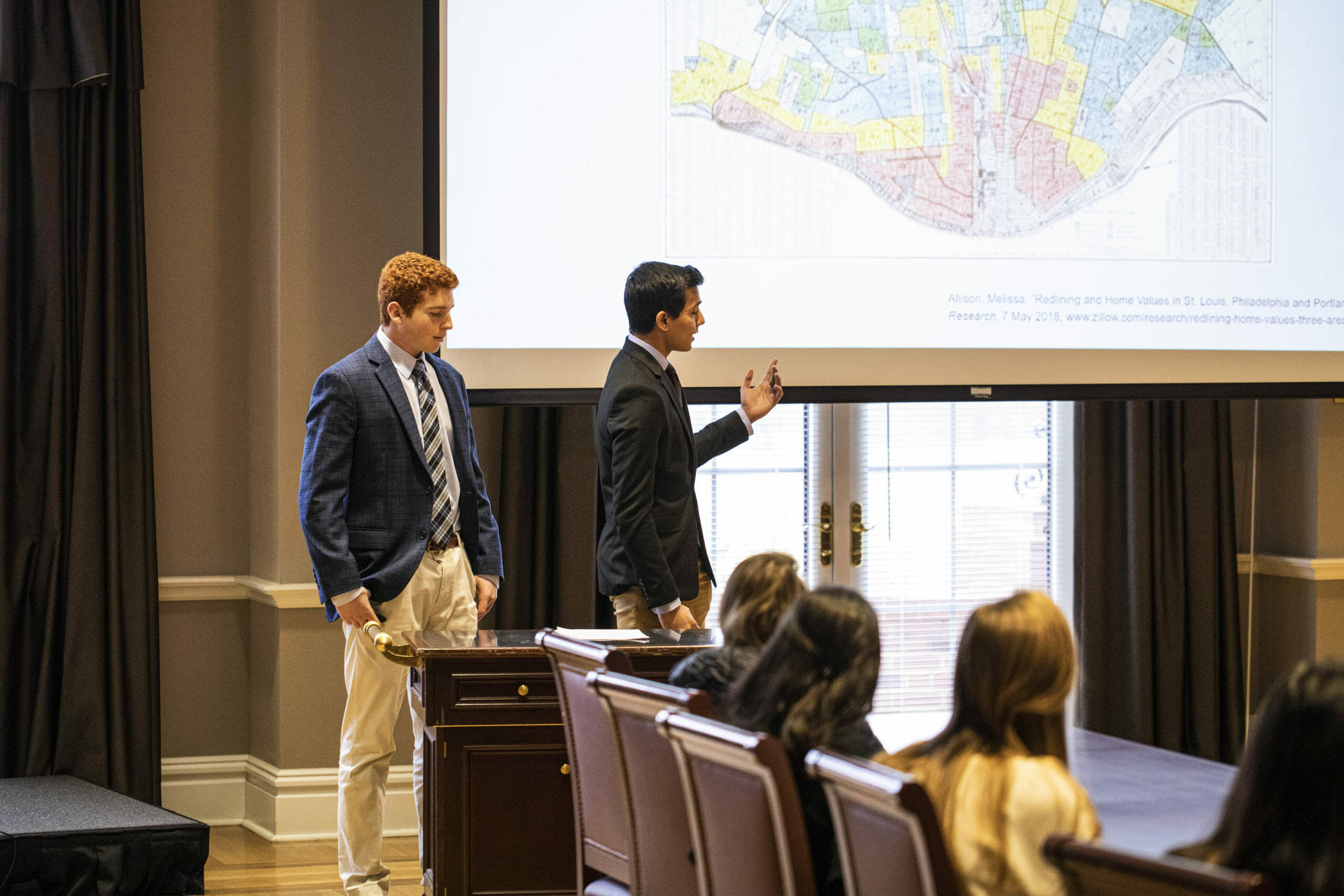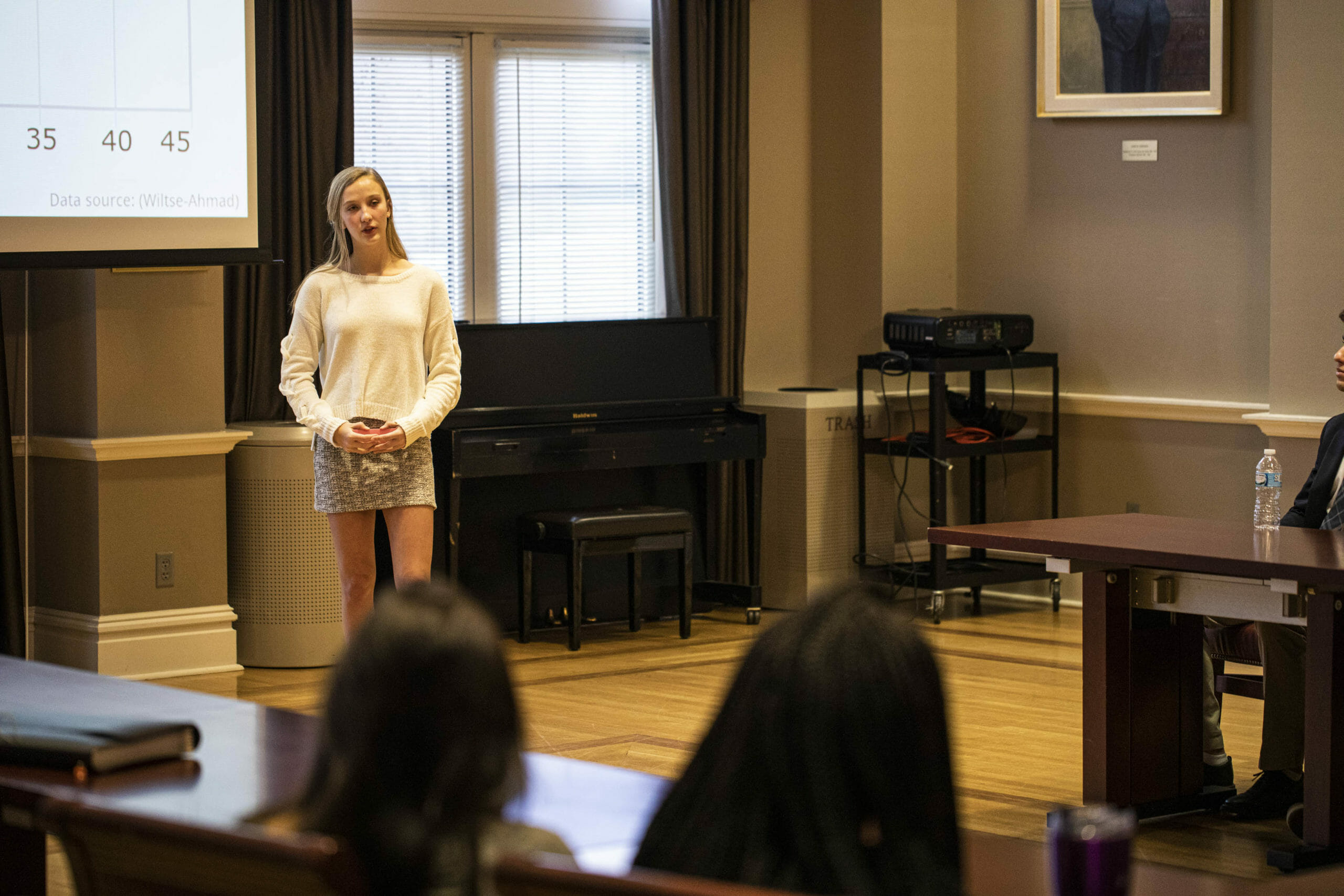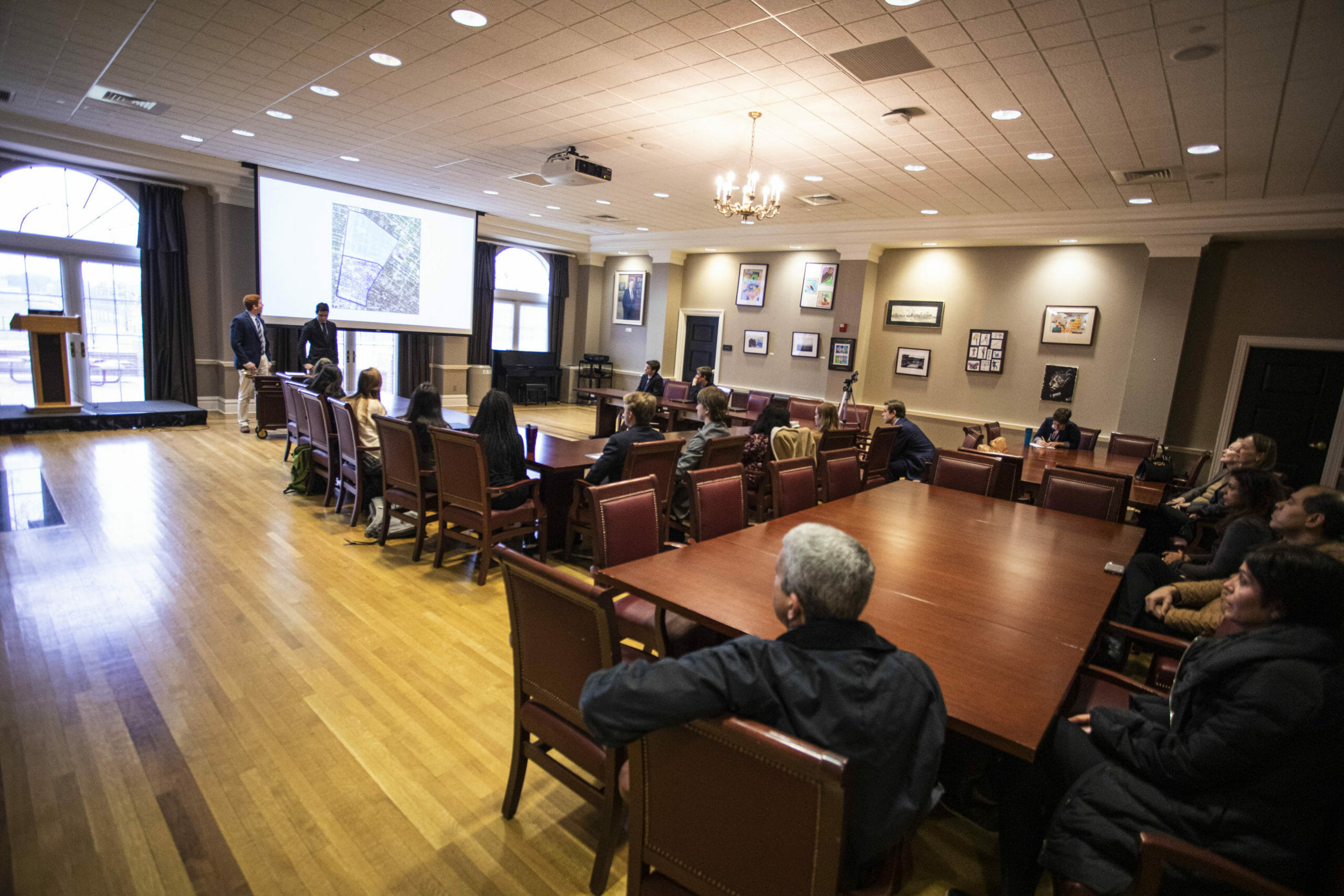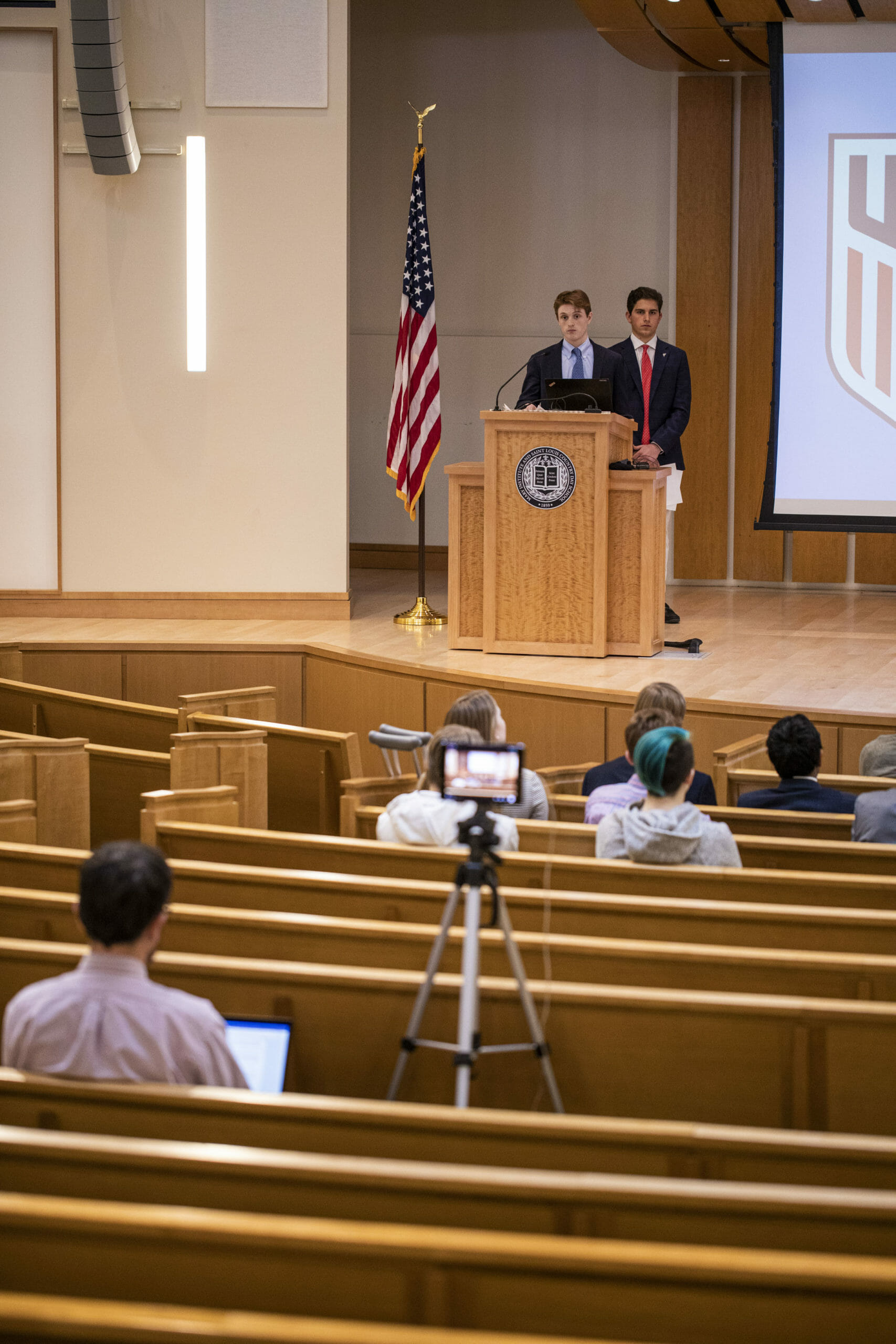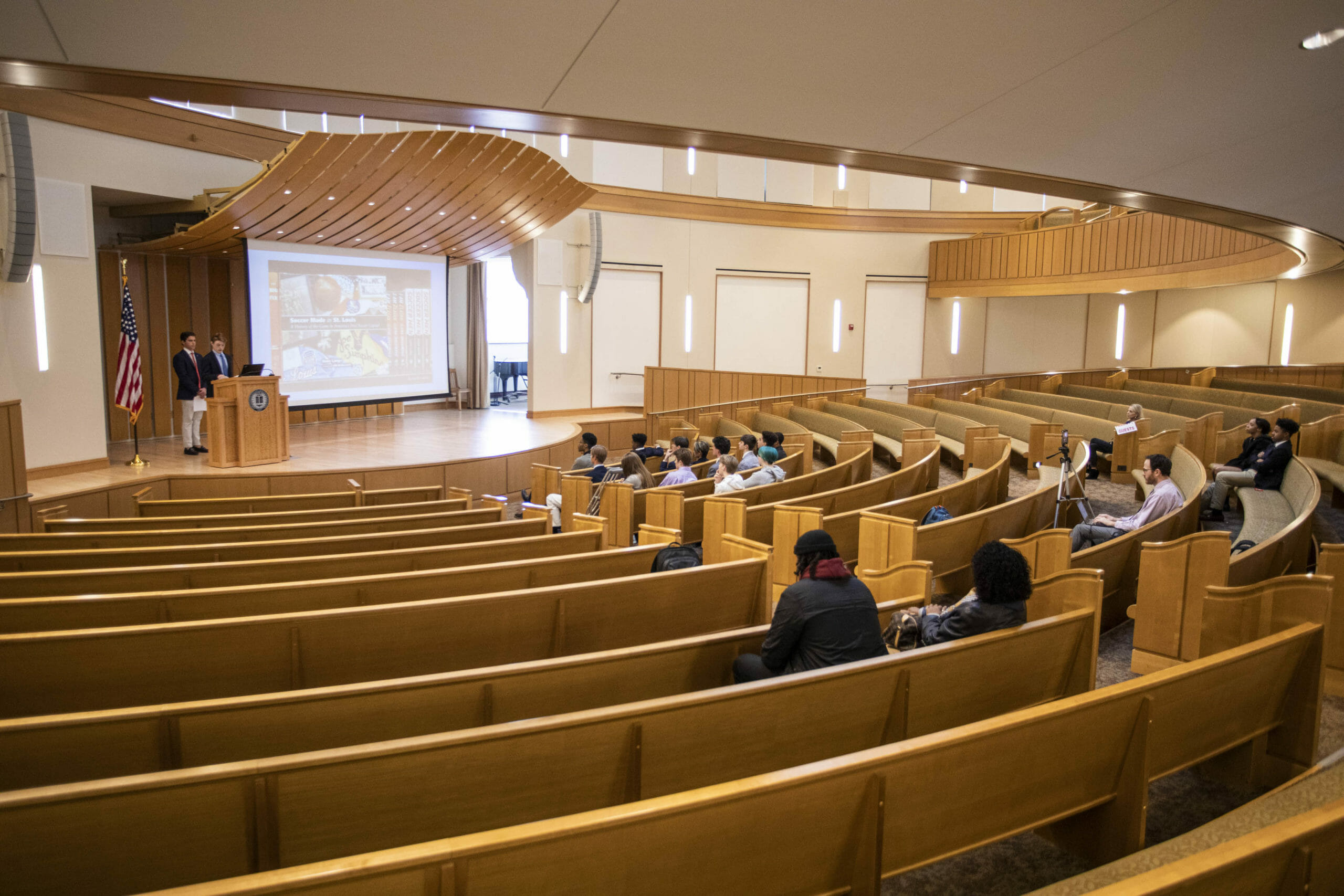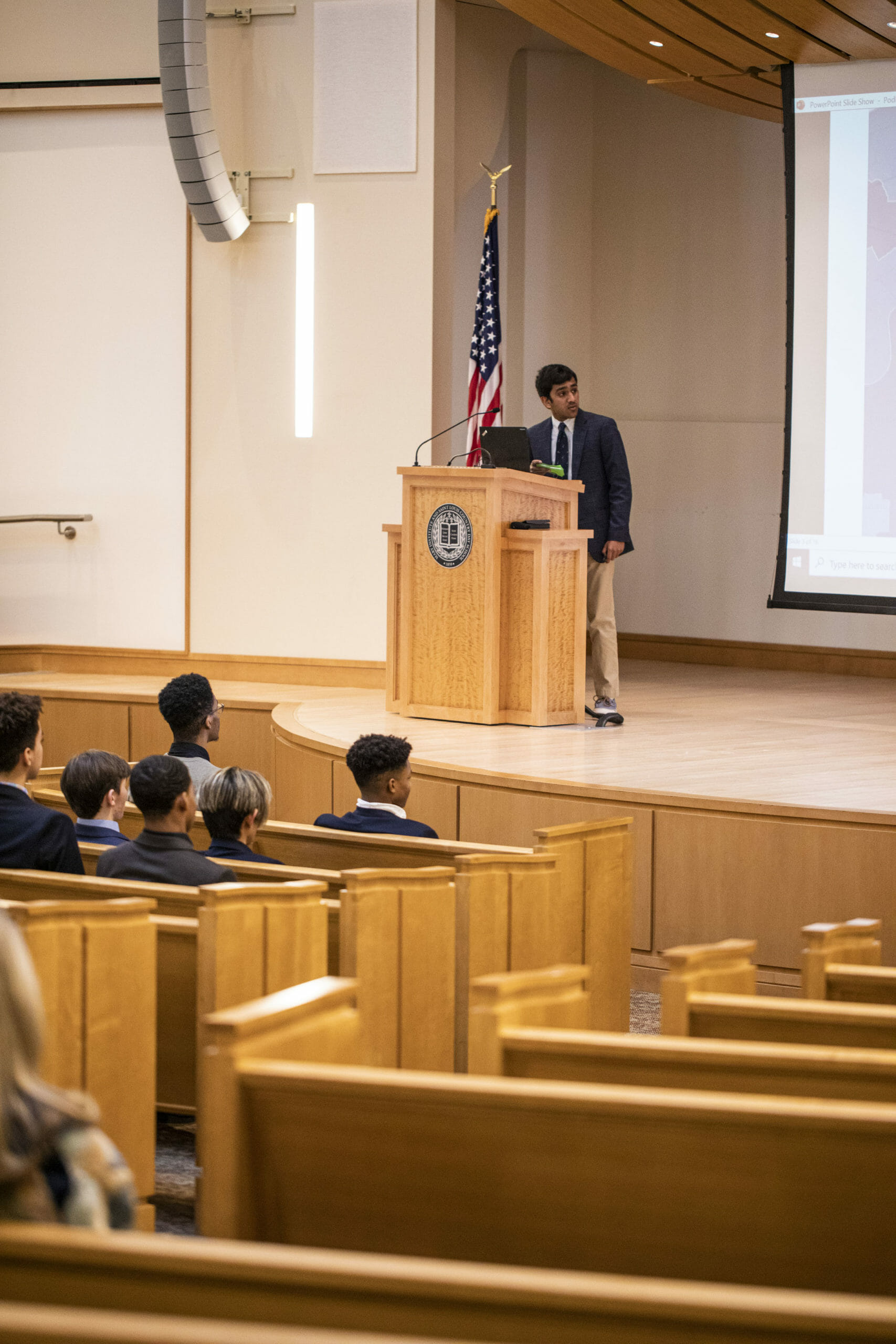Eleventh grade English students engaged in a new project this winter to examine an issue in the St. Louis area and identify the individuals and groups impacted. Building on documentaries produced for their History of St. Louis coursework this past fall, students were challenged to find, gather and understand the various perspectives involved and then weave those voices together with other research to present the story as part of the larger St. Louis narrative. The project focused on these essential questions:
- How do we negotiate the tension between the wants and needs of individuals in our community and the wants and needs of the St. Louis community as a whole?
- What intersections exist between your interests and your assumptions?
- When crafting the narrative of a city, how do we root out our own personal bias and do justice to the different voices and perspectives in that community?
Students worked in groups to research each local issue extensively and from multiple perspectives. They started with their History of St. Louis class documentaries and then identified additional voices that add value to their research and expand the perspectives included in their empathy maps. They conducted interviews to uncover these missing insights and discover perspectives that may only be available through open conversation.
Students presented their topics in written, visual and spoken form. Initial steps included building a storyboard for their presentation and selecting, designing and producing effective visual aids to support their presentation. The project culminated with a formal, ten-minute presentation to an audience of peers and other MICDS community members, telling powerful stories through the many voices and perspectives of the people involved and affected. Teams were evaluated on their research efforts, empathy maps, interview preparation and deliverables, essays, visual presentations and public speaking skills.
This year, students investigated a broad range of local issues such as homelessness, immigration, education, crime and public safety, population and economic trends, the sale of Anheuser-Busch, public affairs at Monsanto (now Bayer) and the impact of baseball on St. Louis.
Upper School English Teacher Dan Sadicario said, “This project is a new and improved iteration of the former Regional Resilience Research Project course, also known as 3RP. The history curriculum at MICDS now focuses much of the first half of 11th grade on St. Louis history, culminating in a documentary project where students expressed their knowledge on one of several issues in St. Louis. In turn, Upper School English teachers held a retreat to design a project that would build off of the new history curriculum. The new project, ‘STL Voices,’ focuses on sharing stories and capturing the ‘voice’ or perspective of individuals impacted by the local issue. The major skills we taught included the art of the interview (students had to interview and/or re-interview subjects from their documentaries) and visual media literacy in the form of making engaging images, metaphorical to data-driven, to project as one presents.”
He continued, “I’m so proud of the students. Because of their diligence, teamwork and talent, and with the guidance and support of my English Department colleagues, I would argue that these student presentations could rival any solid, professional presentation. Future board rooms will be better off.”
Organizations and corporations of the future, your board rooms will no longer be “bored rooms” with MICDS students at the podium!
